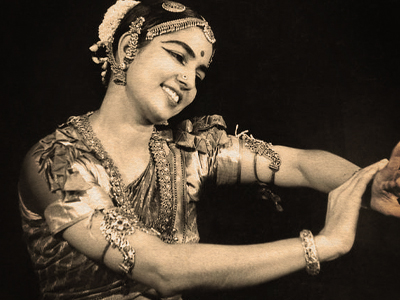
Rukmini Neelakanta Sastri
Rukmini Devi was born in Madura, South India, sixth child to a cultured Brahmin family, Rukmini had a traditional bringing up with Sanskrit scholarship on her father’s side and music on her mother’s side. The city of Thiruvayar in Tanjora, where she grew up, was the home of the greatest saint, composer, and musician of South India. Many in her mother’s family were musicians of standing. Her father was one of the first Theosophists when Madame Blavatsky, the great seer and founder of the Theosophical Society, came to India and revived the Eternal Teachings of the East, slowly becoming lost due to British education.
She is well known and honored for her many accomplishments in the humanitarian, legislative, and cultural fields in her native country. She spent most of her early years at Adyar at the international headquarters of the Theosophical Society and had her residence there. She was associated with the great Theosophical leaders, such as Dr. Annie Besant, C.W. Leadbeater, and Dr. G.S. Arundale whom she later married in 1920 and was the first well-known Brahmin lady to break caste by marring a foreigner.
Rukmini, being actively interested in education, later was responsible for bringing the great madame Montessori to India. She succeeded her husband, Dr. Arundale, as President of the Besant Centenary Trust which manages several educational institutions.
Rukmini travelled all over the world and through meeting Anna Pavlova was inspired to learn classical Indian dancing. Finding that this ancient and beautiful art was rapidly being forgotten, she set herself to accomplish its revival, at first by becoming its active exponent. Her initial performance in 1935 was considered by some a break with tradition. However, her beauty, skill, and the inspiration so apparent in her performance created a sensation and brought her immediate respect and renown. The following year she founded Kalakshetra, a center devoted to the preservation of Indian art and culture.
Kalakshetra has now become one of the most famous cultural institutions of India, well known for teaching the classical dances and music of India. Her group of dancers have earned the name of being most outstanding for the performances of dance dramas, traditional and spiritual in character. This Cultural Centre is composed of an Art Centre for the teaching of the performing arts and for its elementary and higher education. It is composed of a Montessori School, two high schools, a weaving department, a teacher’s training center, a research center in Tamil, and a publication department. Education and art are equally important to Rukmini, her principles being, "No education without art, no art without education".
Her work earned for her a great name and Pandit Nehru appointed her a member of the Upper House of the Indian Parliament for the year 1952, where she served for ten years. Her work in Parliament was mainly for the welfare of animals, and she introduced a comprehensive bill which was enacted into law in 1962. She was the Chairman of the Animal Welfare Board of India until her death 1968. She was one of twelve members of the Upper House to be nominated by the President of India for distinguished services to the country. She has also represented India at UNESCO. Among the awards and honors she received:
The Padma Bushan from the President of India’.
Award and Fellowship from the Sangit Nataka Academy of Music and Dance of India.
Doctor of Humanities from Wayne State University U.S.A. & Ravindra Bharati University of Calcutta.
Doctor of Humanities from Shantiniketan and Visva Bharati University, Founded by Tagore.
Prani Mitra Award (Friend of Animals) from the President of India.
The Queen Victoria Silver Medal from the RSPCA, London.
